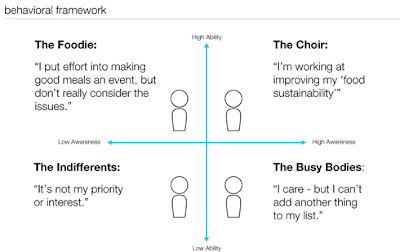After a whole year's hiatus from my blog, I find myself in a new home, new studio, new city and new country. It's a lot to sort out, so forgive the gap in entries.
I have taken to my post as Senior Service Designer at Ziba with great enthusiasm. Every research assignment has had the extra edge of working with new cultures, new places, new opinions and lifestyles. It's reinforcing my belief that the worst thing a designer can do is not spend even a little bit of time away from the wall of hypothetical Post-It Notes.
I've been keen to help refine the service design proposition at Ziba, and while many of the projects we have worked on will remain private for the time being, there is one in particular that I would like to share. My work leading a project for GOOD Ideas for Cities has helped me pursue public sector and policy work, and understand where the boundaries between public and private sector service provision lie.
That said, I'm not here to reinforce the status quo, but explore new relationships between public, private and third sector organizations and how they can better co-create services with the communities they serve.
The Challenge
GOOD Ideas for Cities is now in its second year of exploring the potential in relationships between designers and policy makers. I am hugely grateful to the team of fellow Zibites who volunteered their talent, their early mornings, late nights and weekends to shine a light on how this combination of design and policy can make lives better for the people of Portland.
The video presentation itself set the daunting task of a 6 minute summary for a 6 week-long project, but to further condense and summarize:
Our challenge was 'How do we get the people of Portland to consume less meat?' Given that most people are unaware that this seemingly simple action is in fact the most significant action any of us in the developed world can take to reduce our environmental impact, the project needed to both raise awareness and facilitate change. At the heart of the three services suggested lies a need for real understanding of the people of Portland.
Each service is backed up by a research participant and insight that was representative of many of the things we saw in our quick and dirty dive into people's homes, habits and fridges. The key to explaining this emotional, motivational and behavioural approach as opposed to demographically-led initiatives traditionally favoured by policy makers, was our behavioural persona matrix, further explained in the video.
It provided us with tangible, human personas to design for and was a breath of fresh air to our partners at the City of Portland. However, the challenge in future is shifting the emphasis from merely GOOD Ideas for Cities and towards GOOD Change for Cities.
We have a real convert and advocate in the City of Portland for the ability of service design and design principles and approaches to create new, innovative ways to improve the lives of Portlanders. But on presenting the findings in a lecture to the Rebooting Democracy conference, I was mindful that the practices and processes within those who might affect policy change may have to be transformed to capitalize on such efforts. For now, stage one is successful. Watch this space.


No comments:
Post a Comment